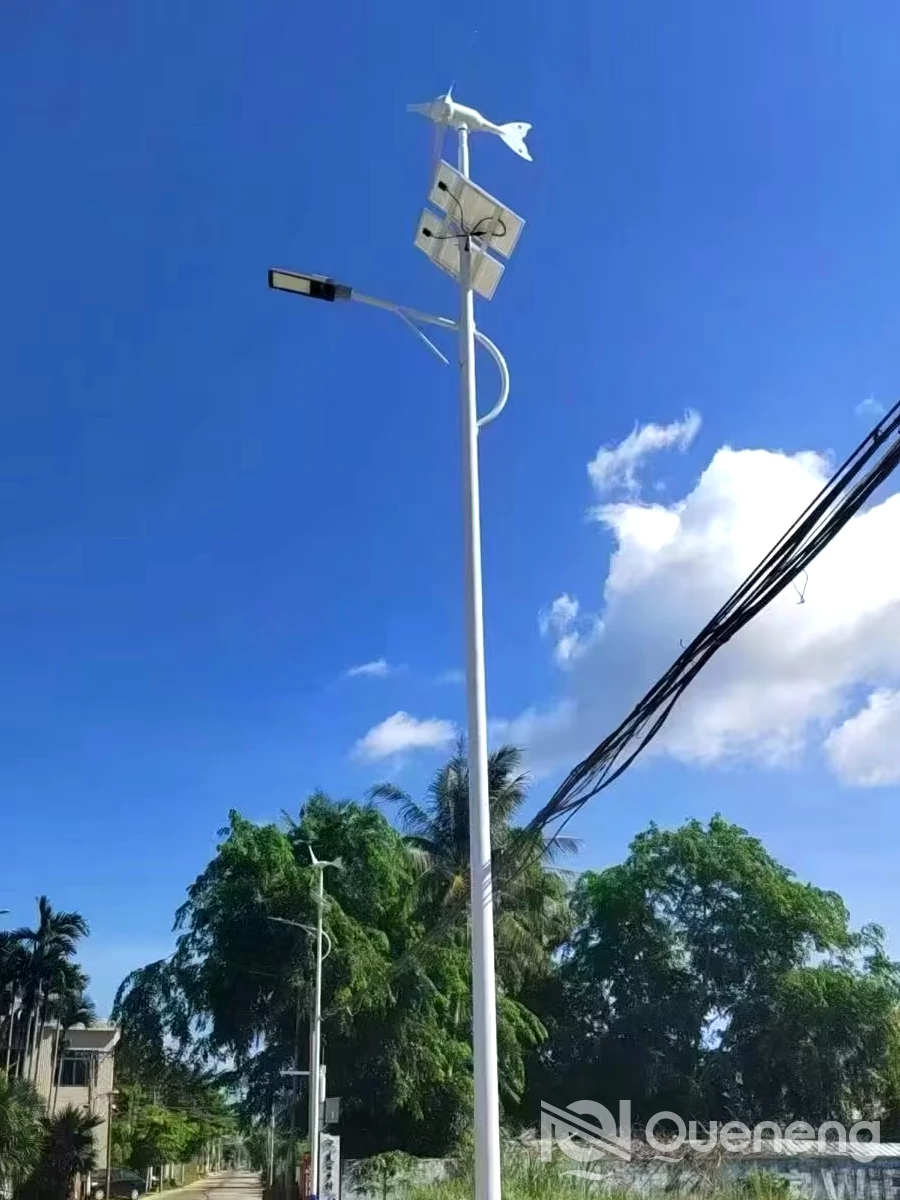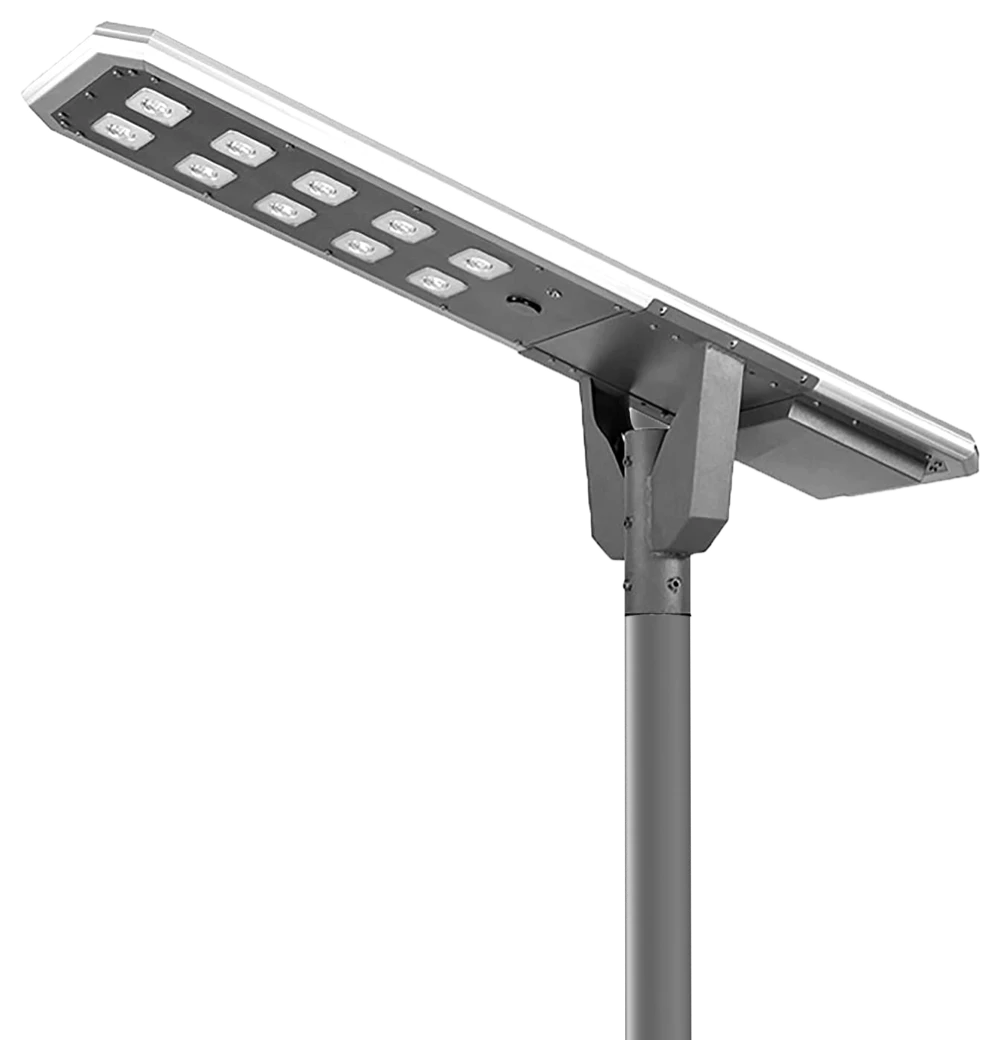Are Solar Street Lights Worth the Investment? | 2025 Cost-Benefit Analysis
-
are solar street lights worth it, solar street light investment, ROI solar lighting, cost of solar street lights, solar street light advantages, solar lighting savings, solar vs traditional lights
1. Upfront Costs vs. Long-Term Savings
Initial Investment
Typical solar street lights range from $100 to $300 per unit based on:
- Brightness and wattage
- Battery and panel capacity
- Smart features (e.g., motion sensors)
- Installation and pole design
Compared to traditional lights ($50–$150 + trenching, wiring), solar may seem costlier upfront but saves over time.
Long-Term Operational Savings
| Cost Item | Traditional Street Light | Solar Street Light |
|---|---|---|
| Energy Bills | $50–$200/year | $0 |
| Trenching & Wiring | $1,000+ per 100m | $0 |
| Maintenance (5 years) | Moderate–High | Low |
| Replacement Battery | N/A | $30–$70 |

2. Environmental and Social Benefits
- Zero emissions: Reduces carbon footprint
- Off-grid use: Ideal for remote or rural areas
- Low light pollution: Directed LED lighting
- Improved safety: Crime and accident reduction
3. Maintenance and Reliability
Modern solar lights are built to last:
- Battery life: 3–8 years
- LED lifespan: 50,000+ hours
- Panel lifespan: 20–25 years
4. ROI in Public and Commercial Projects
Most projects see a payback within 2–4 years.
Examples:
- Municipalities: Save over $100,000/year by switching 500 lights
- Developers: Avoid wiring/infrastructure costs
- Tourism zones: Energy independence with green branding
5. Solar vs. Traditional Street Lights
| Feature | Solar Lights | Traditional Lights |
|---|---|---|
| Energy Source | Sunlight | Grid electricity |
| Operating Cost | Low to none | Ongoing bills |
| Installation | Simple, wireless | Wiring + trenching |
| Maintenance | Low | Moderate |
| Eco Impact | Positive | Carbon emissions |
| Lifespan | 10–25 years | 5–10 years |

Conclusion: Are Solar Street Lights Worth It?
Yes—solar street lights are worth the investment for municipalities, developers, and remote area lighting. They offer lower long-term costs, reliable performance, and clear environmental benefits.
FAQ – Frequently Asked Questions
Q1: How long to recover costs?
A: Typically 2–4 years depending on energy rates and system size.
Q2: Do they work in cloudy weather?
A: Yes, with battery backup for 2–3 days of autonomy.
Q3: Are solar lights suitable for highways?
A: Yes. High-power models (up to 120W+) work well on major roads and industrial zones.
Q4: What's the life expectancy?
A: 10–25 years for the system; LED and panels have long service life.
Q5: Are subsidies available?
A: Many regions offer incentives or renewable energy grants. Check with local agencies.
📞 Get a Free Quote Today
GuangDong Queneng Lighting Technology Co., Ltd. offers:
- Custom solar lighting design
- OEM/ODM manufacturing
- Full project support & ROI reports
Contact us now to learn more about our solar lighting solutions for your project.

Have more questions about our products or services?
The latest hot news you might like

Discover how solar panels power street lights, exploring the technology behind solar energy conversion, storage systems, and how solar-powered street lights are revolutionizing urban and rural lighting solutions.

Learn how AC Solar Hybrid Street Lights work, their advantages, disadvantages, system behavior in low-sunlight conditions, and why hybrid technology is ideal for regions with unstable sunlight.

Municipalities around the world are increasingly adopting solar-powered streetlights as part of their urban development strategies. Rising energy costs, the need for sustainable infrastructure, and government green initiatives are driving cities to switch from traditional street lighting to advanced LED solar streetlights.
Queneng Lighting provides municipalities with cost-effective, energy-efficient, and durable solar lighting solutions, ensuring safe and sustainable public spaces.

In recent years, the purchase of solar streetlights for municipalities has become a growing trend across the globe. Local governments are under pressure to reduce public expenditure, promote green energy, and create safer communities. Solar streetlights provide a reliable, cost-effective, and sustainable solution that meets these needs. Queneng Lighting, as a leading solar street lighting manufacturer, has supported multiple municipal projects worldwide with customized and energy-efficient solutions.
FAQ
Battery Types and Applications
What is a paper battery? What is a smart secondary battery?
Commercial and Industrial Parks
What certifications do your solar lights have?
Our solar lights are certified with ISO, CE, and RoHS to ensure compliance with international safety and environmental standards.
Solar Street Light Lulin
What makes Lulin solar street lights high-performance and energy-saving?
Lulin solar street lights are designed with high-efficiency solar panels and cutting-edge LED technology, providing optimal brightness with minimal energy consumption. The LED lights consume less power while offering superior illumination, and the solar panels capture and store sunlight efficiently, ensuring the lights perform well even in low sunlight conditions.
Schools and Educational Institutions
What kind of maintenance is needed for solar lights?
The main maintenance required is cleaning the solar panels periodically to ensure they remain free of dust or debris, and occasionally checking the functionality of the battery and light.
Transportation and Highways
How long does the installation process take for a highway solar lighting system?
The installation time depends on the project size. Typically, a single solar streetlight can be installed in 1-2 hours, while larger highway projects may take several days or weeks.
Can the lights operate continuously in rainy or cloudy conditions?
Yes, the battery is designed to store enough energy to last for several days without sunlight.

Introducing the Luda Solar Street Light by Queneng: the ultimate in outdoor lighting. This durable, eco-friendly solar street light offers high efficiency and sustainability. Perfect for illuminating streets, pathways and public spaces, it harnesses solar power to reduce energy costs and environmental impact.
If you would like more information about Queneng solar lighting solutions, please send us a message by filling out the form below. Our professional team will get back to you within 24 hours!
Rest assured that your privacy is important to us, and all information provided will be handled with the utmost confidentiality.
Schedule a Meeting

Book a date and time that is convenient for you and conduct the session in advance.
Have more questions about our products or services?



















